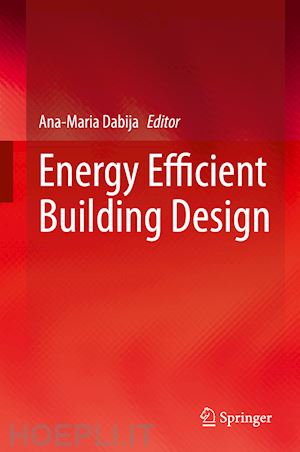
Questo prodotto usufruisce delle SPEDIZIONI GRATIS
selezionando l'opzione Corriere Veloce in fase di ordine.
Pagabile anche con Carta della cultura giovani e del merito, 18App Bonus Cultura e Carta del Docente
This book is the result of recent research that deals with the built environment and innovative materials, carried out by specialists working in universities and centers of research in different professional fields - architecture, engineering, physics - and in an area that that spans from the Mediterranean Sea to the Persian Gulf, and from South Eastern Europe to the Middle East. This book takes the necessity of re-shaping the concept of building design in order to transform buildings from large scale energy consumers to energy savers and producers into consideration. The book is organized in two parts: theory and case studies. For the theoretical part, we chose from the wide range of sources that provide energy efficient materials and systems the two that seem to be endless: the sun and vegetation. Their use in building products represents a tool for specialists in the architectural design concept. The case-studies presented analyze different architectural programs, in different climates, from new buildings to rehabilitation approaches and from residential architecture to hospitals and sports arenas; each case emphasizes the interdisciplinarity of the building design activity in order to help readers gain a better understanding of the complex approach needed for energy efficient building design
Born in Bucharest, Romania, in 1960, Prof. Dr. Ana-Maria Dabija has been an architect since 1986. She worked in a design institute and a private company before pursuing a university career in the “Ion Mincu” University of Architecture and Urbanism in Bucharest, in 1991. She has a Doctoral Degree, since 2000 and is a doctoral tutor since 2008. Among the courses she developed are the following “Architectural Detailing Principles”, “Contemporary Technological Products and Subassemblies” and “Mistakes in Design – Execution – Use”. She wrote the books -“Performant Façade Systems. The opaque component”, “Elements for Stair Design” (also translated in English), “Elements for Designing Windows and Doors”, “Degradation of the Building Envelope”, “Photovoltaic Systems in Architecture”, took part in more than 60 conferences (with papers published in the proceedings), coordinated technical regulations and scientific research. Since 2015 she is a member in the Commission for Renewable Energy of the Romanian Academy. Ana-Maria Dabija is a member of numerous national and international professional and scientific bodies as well as in technical committees. Since 2016 she is the Director of the Center of Architectural and Urban Studies (CSAU) of the “Ion Mincu” University of Architecture and Urbanism Bucharest, Romania and since 2017 the Director of the Architecture Doctoral School of the Ion Mincu University











Il sito utilizza cookie ed altri strumenti di tracciamento che raccolgono informazioni dal dispositivo dell’utente. Oltre ai cookie tecnici ed analitici aggregati, strettamente necessari per il funzionamento di questo sito web, previo consenso dell’utente possono essere installati cookie di profilazione e marketing e cookie dei social media. Cliccando su “Accetto tutti i cookie” saranno attivate tutte le categorie di cookie. Per accettare solo deterninate categorie di cookie, cliccare invece su “Impostazioni cookie”. Chiudendo il banner o continuando a navigare saranno installati solo cookie tecnici. Per maggiori dettagli, consultare la Cookie Policy.